Showing Spotlights 921 - 928 of 2878 in category All (newest first):
 Access to accurate surface energy values of graphene is not only of fundamental interest, but provides a useful reference for anyone involved in research on graphene properties, (surface) modifications, and the implementation of graphene in devices. New research demonstrates the successful application of the graphene surface force balance (g-SFB) to directly measure the surface energy of pure graphene. This work is of fundamental interest to a broad community and will aid the advancement of fundamental measurements of 2D and other nanomaterials.
Access to accurate surface energy values of graphene is not only of fundamental interest, but provides a useful reference for anyone involved in research on graphene properties, (surface) modifications, and the implementation of graphene in devices. New research demonstrates the successful application of the graphene surface force balance (g-SFB) to directly measure the surface energy of pure graphene. This work is of fundamental interest to a broad community and will aid the advancement of fundamental measurements of 2D and other nanomaterials.
May 17th, 2017
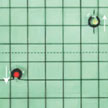 A recent review article highlights the role of electrochemistry in synthesizing materials for self-powered micro- and nanodevices; the aspect of charge transfer and changes in electrochemical potentials for locomotion; control of self-propelled motion using electrochemistry and electric fields; and possible applications in electrochemical sensing and energy generation using micro- and nanoscale motion. The authors discuss various electrochemical techniques, which allow for the fabrication of large amounts of micro/nanorobots from diverse materials, with and without the use of templates.
A recent review article highlights the role of electrochemistry in synthesizing materials for self-powered micro- and nanodevices; the aspect of charge transfer and changes in electrochemical potentials for locomotion; control of self-propelled motion using electrochemistry and electric fields; and possible applications in electrochemical sensing and energy generation using micro- and nanoscale motion. The authors discuss various electrochemical techniques, which allow for the fabrication of large amounts of micro/nanorobots from diverse materials, with and without the use of templates.
May 16th, 2017
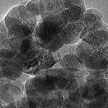 Supercapacitors, a rapidly emerging type of energy storage device, hold great potential due to their interesting characteristics: high power density, fast charge and discharge rates, and long-term cycling life. However, the use of supercapacitors is severely limited by their low energy density, which is one to two magnitudes lower in comparison with Li-ion batteries. In new work, researchers have developed a low-crystalline FeOOH nanoparticle anode with excellent comprehensive electrochemical performances at both low and high mass loadings as potential replacements for carbon negative electrodes in full supercapacitor devices.
Supercapacitors, a rapidly emerging type of energy storage device, hold great potential due to their interesting characteristics: high power density, fast charge and discharge rates, and long-term cycling life. However, the use of supercapacitors is severely limited by their low energy density, which is one to two magnitudes lower in comparison with Li-ion batteries. In new work, researchers have developed a low-crystalline FeOOH nanoparticle anode with excellent comprehensive electrochemical performances at both low and high mass loadings as potential replacements for carbon negative electrodes in full supercapacitor devices.
May 15th, 2017
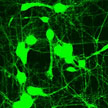 Growing neurons outside the brain but with predictable synaptic connectivity between other neurons could provide for an efficient platform for fundamental research and design of neuroprosthetics. Various neuromorphic engineering research efforts are underway to do this. A team now has built a Brain-on-a-chip where they demonstrated guided growth of neurons on semiconductor nanowire scaffolds. Providing an environment were scientists could study a less complex neuronal circuit as opposed to a fully functioning circuit in a living mammalian brain will open up a new experimental paradigm of understanding how the neurons are influenced by the mechanical properties of the brain as they grow and form circuits.
Growing neurons outside the brain but with predictable synaptic connectivity between other neurons could provide for an efficient platform for fundamental research and design of neuroprosthetics. Various neuromorphic engineering research efforts are underway to do this. A team now has built a Brain-on-a-chip where they demonstrated guided growth of neurons on semiconductor nanowire scaffolds. Providing an environment were scientists could study a less complex neuronal circuit as opposed to a fully functioning circuit in a living mammalian brain will open up a new experimental paradigm of understanding how the neurons are influenced by the mechanical properties of the brain as they grow and form circuits.
May 12th, 2017
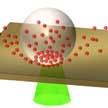 The use of quantum dots (QDs) in practical applications relies on the ability to precisely pattern QDs on substrates with desired optical properties. Typical direct-write printing techniques such as inkjet and gravure printing are limited in resolution (micron-scale), structural complexity, and require significant post-processing time. In new work, researchers use laser-induced bubble printing to pattern CdSe/CdS QDs on plasmonic substrates with submicron resolution, high throughput, and strong QD-substrate adhesion.
The use of quantum dots (QDs) in practical applications relies on the ability to precisely pattern QDs on substrates with desired optical properties. Typical direct-write printing techniques such as inkjet and gravure printing are limited in resolution (micron-scale), structural complexity, and require significant post-processing time. In new work, researchers use laser-induced bubble printing to pattern CdSe/CdS QDs on plasmonic substrates with submicron resolution, high throughput, and strong QD-substrate adhesion.
May 11th, 2017
 Hybrid nanomaterials (nanohybrids) are composed of two or more components - at least one of which is nanoscale - exhibiting many distinct physicochemical properties and hold great promise for applications in optics, electronics, magnetics, new energy, environment protection, and biomedical engineering. Different types of nanohybrids have been successfully synthesized via microfluidic processes or hybrid microfluidic-batch processes. The synthesis of nanohybrids using microfluidic-based processes can fulfill many challenges present in conventional bottle batch methods.
Hybrid nanomaterials (nanohybrids) are composed of two or more components - at least one of which is nanoscale - exhibiting many distinct physicochemical properties and hold great promise for applications in optics, electronics, magnetics, new energy, environment protection, and biomedical engineering. Different types of nanohybrids have been successfully synthesized via microfluidic processes or hybrid microfluidic-batch processes. The synthesis of nanohybrids using microfluidic-based processes can fulfill many challenges present in conventional bottle batch methods.
May 9th, 2017
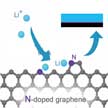 Lithium metal anodes with ultrahigh theoretical specific capacity and the lowest negative electrochemical potential, have been considered the most promising electrode for next-generation rechargeable batteries, including rechargeable Li-S, Li-air batteries, and even Li metal batteries which utilize intercalation compounds as cathodes. Designing a Li plating matrix with a high surface area and lithiophilic surface maybe can help gain a dendrite-free metal anode.
Lithium metal anodes with ultrahigh theoretical specific capacity and the lowest negative electrochemical potential, have been considered the most promising electrode for next-generation rechargeable batteries, including rechargeable Li-S, Li-air batteries, and even Li metal batteries which utilize intercalation compounds as cathodes. Designing a Li plating matrix with a high surface area and lithiophilic surface maybe can help gain a dendrite-free metal anode.
May 5th, 2017
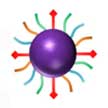 Immunotherapy has become an important part of treating some types of cancer. It uses certain parts of a person's immune system to fight the cancer. Usually this is done by administering immune system components, such as man-made immune system proteins. In recent years, nanotechnology has played an increasingly important role in pursuing efficient vaccine delivery in cancer immunotherapy. This article discusses vaccine delivery by synthetic nanoparticles or naturally derived nanoparticles for cancer immunotherapy.
Immunotherapy has become an important part of treating some types of cancer. It uses certain parts of a person's immune system to fight the cancer. Usually this is done by administering immune system components, such as man-made immune system proteins. In recent years, nanotechnology has played an increasingly important role in pursuing efficient vaccine delivery in cancer immunotherapy. This article discusses vaccine delivery by synthetic nanoparticles or naturally derived nanoparticles for cancer immunotherapy.
May 4th, 2017
 Access to accurate surface energy values of graphene is not only of fundamental interest, but provides a useful reference for anyone involved in research on graphene properties, (surface) modifications, and the implementation of graphene in devices. New research demonstrates the successful application of the graphene surface force balance (g-SFB) to directly measure the surface energy of pure graphene. This work is of fundamental interest to a broad community and will aid the advancement of fundamental measurements of 2D and other nanomaterials.
Access to accurate surface energy values of graphene is not only of fundamental interest, but provides a useful reference for anyone involved in research on graphene properties, (surface) modifications, and the implementation of graphene in devices. New research demonstrates the successful application of the graphene surface force balance (g-SFB) to directly measure the surface energy of pure graphene. This work is of fundamental interest to a broad community and will aid the advancement of fundamental measurements of 2D and other nanomaterials.
 Subscribe to our Nanotechnology Spotlight feed
Subscribe to our Nanotechnology Spotlight feed





